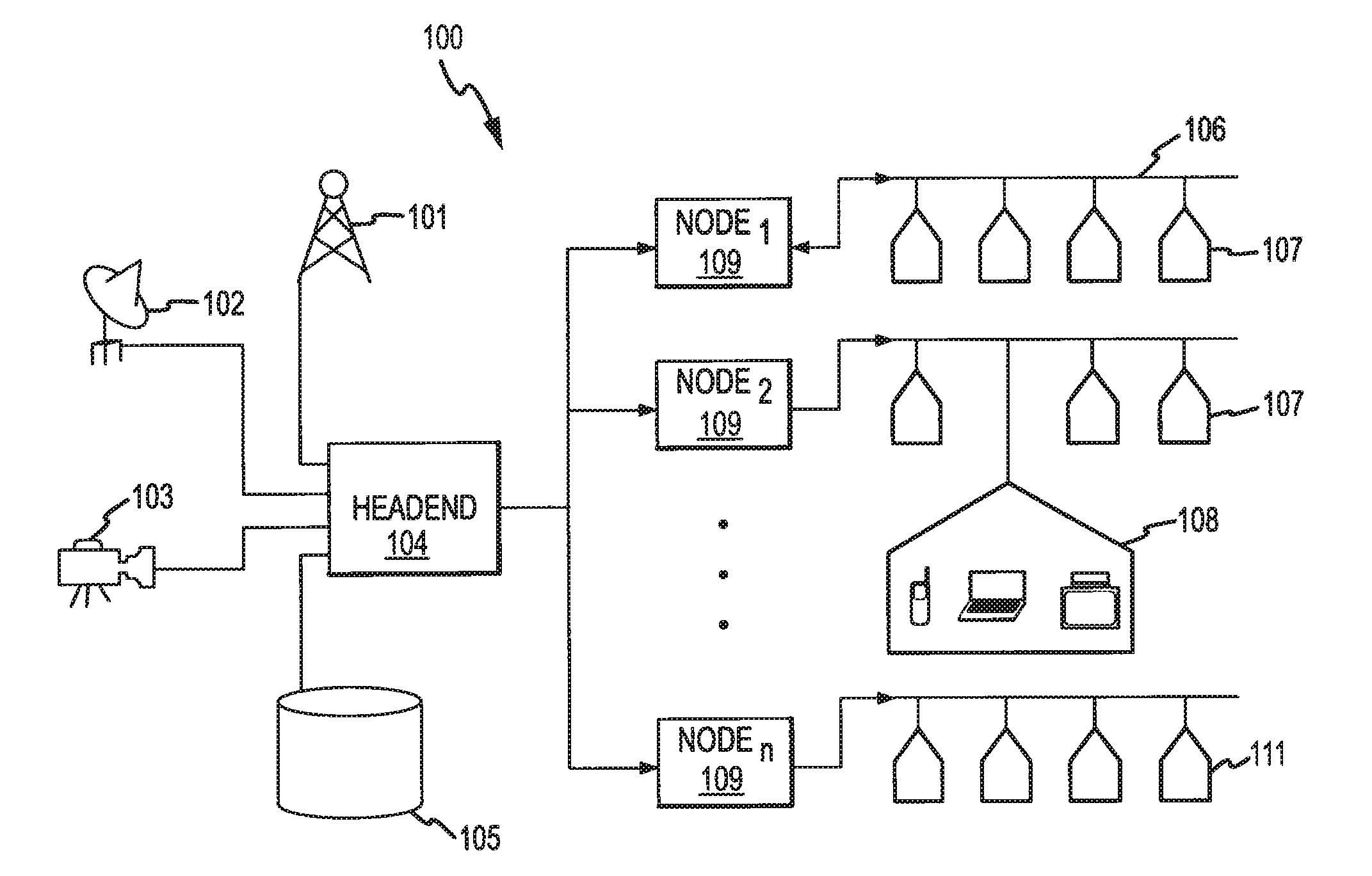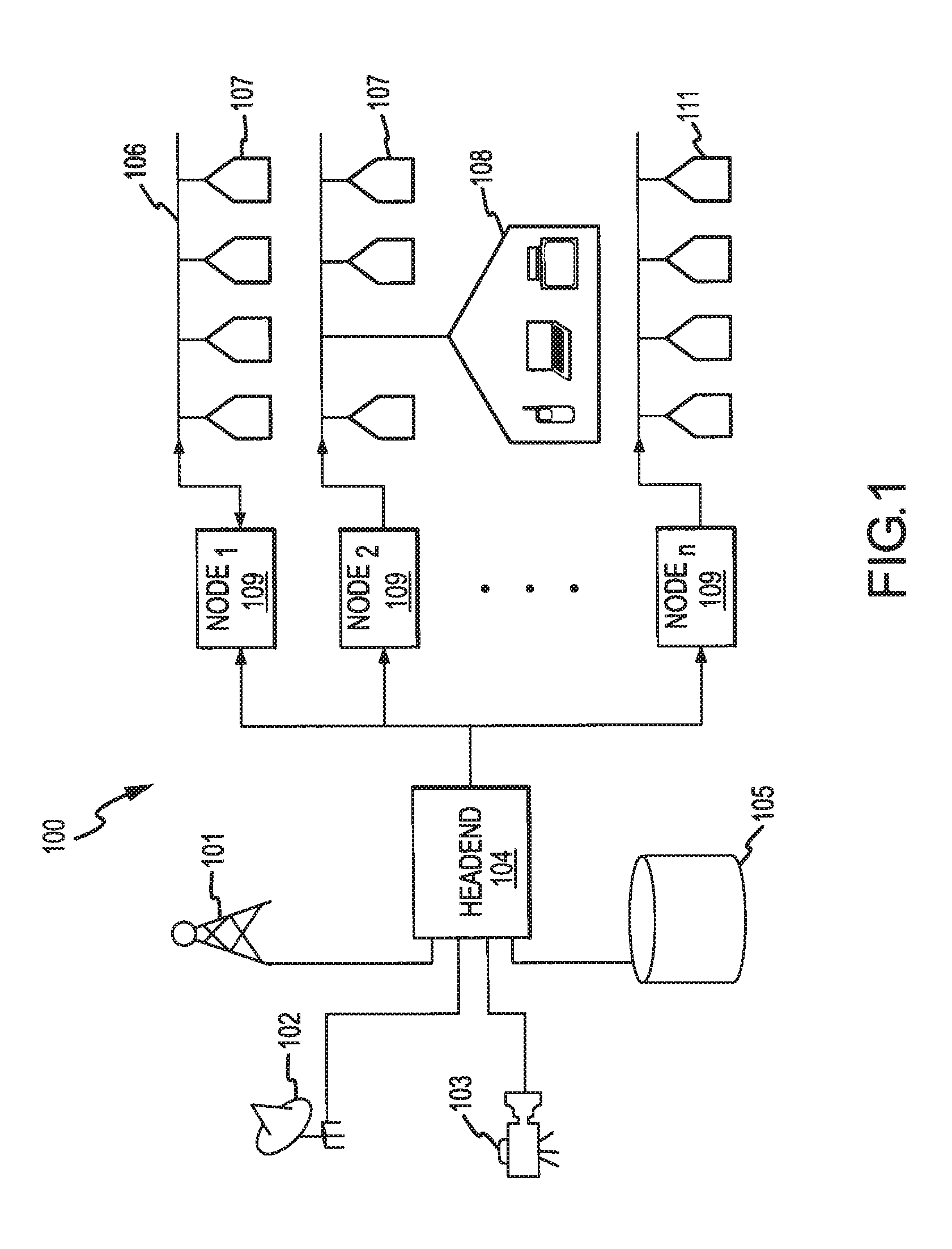[0019]As discussed above, an important aspect of the present invention relates to allowing users to easily request and receive follow-on assets relating to any content of interest. Such follow-on assets may include information such as product and / or
service information or marketing materials, coupons, or other materials regarding the content. Certain proposals in this regard have been limited to specific interactive environments, specific media, or have required substantial production modification to accommodate this functionality. For example, interactive assets broadcast on a television network may require complex code at a
set top box to implement interactivity. Moreover, such interactive assets may require assets to be developed through a production process that defines the interactive behavior of the asset. Interactive assets distributed through a broadcast network may also require that
metadata be transmitted along with the interactive asset for
processing by the
set top box software. These
interactive television asset systems may not extend to
digital video recorder (DVR)
time shifting environments and do not extend to certain broadcast environments such as airwave
broadcasting, analog cable
broadcasting, or
digital cable broadcasting without interactive logic. Moreover, proposed solutions are generally limited to particular media and do not provide a common platform to support a variety of media including television, radio, print, billboard, and the like. Nor do they provide a common platform to support non-
media content of interest.
[0033]To provide additional incentive to users to opt-in to the RFI program, members may be given access to advanced functionalities for organizing, filtering, and even forwarding tags for associated assets. Members may also take
advantage of auto-tagging capabilities that allow the user to pre-define follow-on assets that the user would prefer to receive automatically without the need to submit an individual RFI request for each asset.
[0039]The utility described above provides several benefits to broadcast network users, MVPDs,
programming networks, asset providers, and RFI providers. First, the utility allows asset providers to more effectively target assets to users because asset providers may craft follow-on assets and information that are tailored to particular user profiles. Second, users are able to consume content of interest (e.g., television or
radio program,
magazine articles) without interruption and consume follow-on assets in an interactive environment at a separate time, allowing asset providers to achieve the benefits of high
impact, large reach advertising as well as the opportunity to engage interested users in an interactive mode with the potential of instantaneous transaction consummation. Third, the utility provides a mechanism for obtaining reliable statistical feedback regarding what users are consuming their content, and further, what users that are requesting additional information relating to their content and ultimately
purchasing related products and / or services. Fourth, virtually any person, place, or thing may be RFI enabled in a manner that is not tied to any one particular technology or device, making follow-on assets convenient and attractive to a
large array of asset providers as well as users.
[0040]A targeted asset delivery environment serves to further enhance the RFI utility discussed above in relation to broadcast television content. A targeted asset
delivery system allows for delivery of targeted assets to desired groups of individuals or individuals having desired characteristics or audience classification parameters including personal information, demographic information, geographic information, psychographic information, or any other information that may be relevant to an asset provider in identifying a target audience. First, targeted asset delivery systems generally employ
software resident at the
user equipment device / digital
set top box or another network location such as the head end that is aware of the targeted assets selected for or delivered to the set top. Thus, any express RFI input from a user may directly specify the asset to which the RFI input relates, and therefore, the MVPD or other RFI provider need not manipulate the click-
stream data to associate a particular click with an RFI input. Second, while a user's
indication of interest may be express (e.g., an RFI input), as discussed above, a targeted asset
delivery system accommodates targeting of assets in a broadcast network with a high degree of
granularity based on different audience classifications. As a result, the mere fact that an asset is selected for a particular user may be considered an implied
indication of interest in the products, services, or asset provider associated with the selected asset. Thus, follow-on information may be directed to the user based only on the delivery, or delivery and consumption, of a targeted asset. Third, because many households include multiple users, targeting based on household
demographics alone may have limited effectiveness. In this regard, targeted asset delivery systems include mechanisms to distinguish between multiple users of a single set top box such that any RFI request may stipulate which of multiple users associated with the set top box has indicated interested in particular content, and in turn, any follow-on asset may be crafted for that particular user.
 Login to View More
Login to View More  Login to View More
Login to View More 


